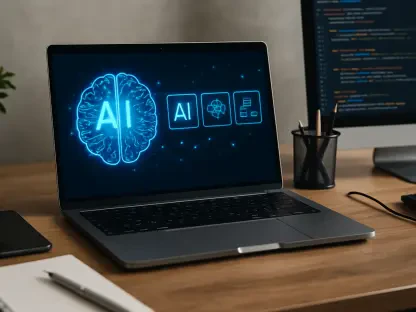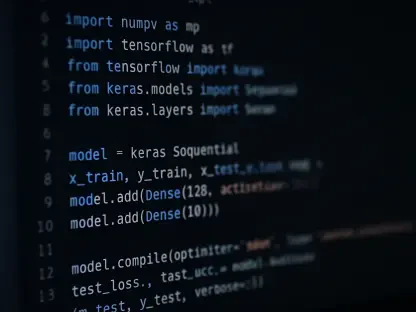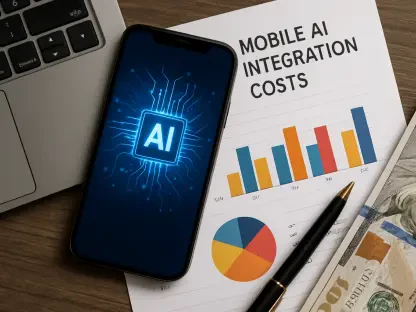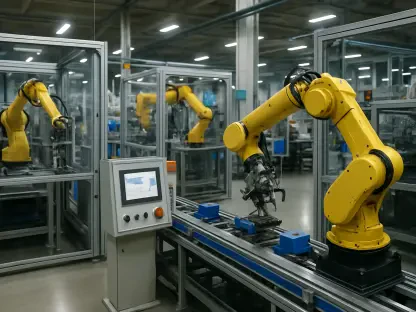The integration of Generative AI into low-code/no-code (LCNC) software development platforms is profoundly transforming the software development process. These platforms aim to simplify and expedite the software development cycle by allowing users to create applications without extensive hand-coding. However, users still need to make decisions regarding architecture, logic, and workflow orchestration. Gen AI is now enhancing these platforms by automating complex decision-making processes and autonomously generating portions of application logic.
Synergy Between Gen AI and LCNC Development
Generative AI augments LCNC platforms by automating complex decision-making and generating application logic. This synergy simplifies tasks such as database schema design through Natural Language Processing (NLP), which allows users to interact with the platform using natural language queries. Consequently, non-technical users can perform complex development tasks with greater ease and efficiency.
Code Generation and Augmentation
With tools like OpenAI’s Codex or GitHub Copilot, Gen AI offers intelligent coding suggestions, auto-complete functions, and generates blocks of logic based on user input. This reduces repetitive tasks, thus enabling developers to concentrate on strategic and high-value work. For instance, Gen AI can automate the generation of microservices by interpreting user requirements and creating service interfaces, data models, and testing scripts.
Error Detection and Debugging
Gen AI also assists in identifying potential issues within auto-generated or customized components by predicting where problems might arise and suggesting fixes proactively. This capability not only saves time but also improves code reliability and quality, making the debugging process more efficient.
Data Integration and Workflow Automation
Data integration remains a major challenge in application development, and Gen AI addresses this by automating data mapping and optimizing workflows. It intelligently maps data fields and generates workflows based on high-level business process descriptions. This reduces development time and effort substantially, streamlining the entire process.
User Experience (UX) Design
In the realm of user experience design, Gen AI aids in creating intuitive and attractive user interfaces (UIs) by generating prototypes based on user specifications. Instead of manually arranging UI components, users can describe their ideal UI, and the AI will render an interactive and responsive design. This makes it easier to achieve a polished and user-friendly interface without extensive design expertise.
Collaboration and Version Control
Gen AI enhances real-time collaboration among team members by detecting potential merge conflicts and suggesting automated resolutions. This functionality ensures that changes tracked in real-time are combined or reconciled efficiently, which facilitates smoother teamwork and more coherent codebases.
Security and Compliance
Ensuring security and compliance is another critical aspect where Gen AI shows its strength. It identifies vulnerabilities in generated code or application workflows and ensures that applications meet regulatory compliance requirements automatically. It also flags potential security risks and suggests or even auto-corrects insecure code and compliance issues in real-time.
Scaling and Performance Optimization
Gen AI continuously monitors application performance and suggests real-time optimizations such as database indexing, load balancing, or caching mechanisms. It also automates performance testing by generating synthetic user traffic to predict potential issues before they occur in a live environment, thus ensuring scalable and reliable applications.
Overarching Trends
The integration of Gen AI with LCNC platforms is pioneering a significant transformation in software development by reducing the technical burden on developers and facilitating faster, more efficient application building. Gen AI’s ability to automate complex tasks and provide intelligent suggestions is streamlining the development process, making it more accessible to users with varying levels of technical expertise. Additionally, advancements in Gen AI are enabling better collaboration, improved security, and compliance, as well as more efficient scaling and performance optimization.
Main Findings
The fusion of Generative AI with low-code/no-code (LCNC) platforms is revolutionizing how software is developed. These platforms are designed to make the software creation process simpler and faster by enabling users to build applications without needing to write a lot of code. Despite this simplification, users still have to decide on things like architecture, logic, and workflow orchestration. Now, Generative AI is taking these platforms to the next level by automating these complex decision-making processes and generating parts of the application logic on its own.
With Generative AI, LCNC platforms become even more powerful tools, allowing users to focus less on technical details and more on functionality and user experience. This technology helps bridge the gap for those who may not have extensive coding skills but still want to create robust, efficient applications. By automating intricate tasks, Gen AI not only speeds up the development process but also reduces the likelihood of human error, resulting in more reliable software. As a result, businesses can bring their products to market faster while maintaining high quality, reshaping the future of software development.









